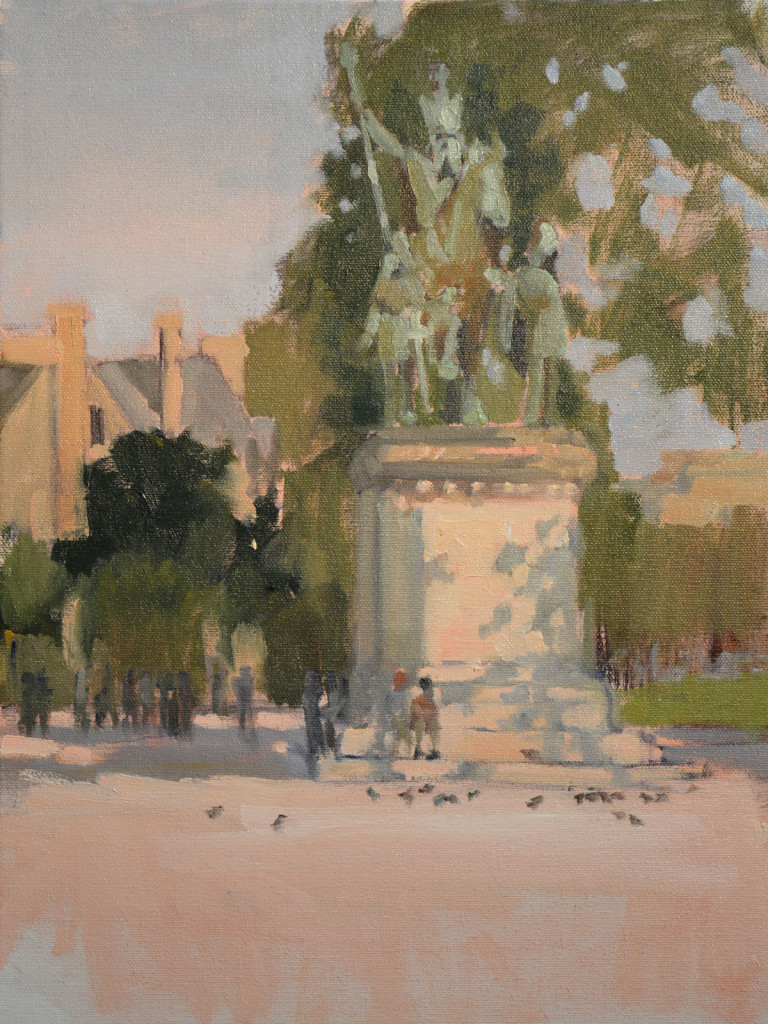Painting Charlemagne at Notre Dam in Paris was my second plein air painting outing during this trip with my husband. My husband had one day of work and on that day I went out painting. I was thinking about painting Notre Dam and headed that way, but I just couldn’t get a good view, there were too many buses, cars, just too much modern day congestion that took away from this beautiful 800 year old cathedral. In retrospect I was just too close and would have had a better view from much farther away. But I kept walking around, pulling my red backpack on wheels with my supplies, and as I got closer I saw this amazing statue of Charlemagne.
Actually I didn’t know who it was, didn’t care, it was gorgeous. So I set up to paint that.
This time I did wear my headphones to stop people from talking to me. It worked moderately well. Again, people were taking my picture like I was the Pope. But I tried my best to tune it all out. Well, not all of it, I suppose that’s part of the fun of painting in Paris, all the people around me, but it does take a great deal of concentration to produce a painting.
I enjoyed putting in some of the people in this painting since they were very much part of the atmosphere. I caught a few people sitting at the foot of the great statue and luckily they stayed long enough for me to make a few quick strokes. Painting Charlemagne at Notre Dam was a magical experience, especially when the cathedral bells rang which you can hear in the video below.
So who took the video? My husband. After his day of work he walked over to Notre Dam because that’s where I told him I would be painting. He was pretty surprised to see my canvas and NOT see a painting of Notre Dam taking place. He thought I was crazy, there I was right in front of Notre Dam and I didn’t paint it. We did tour Notre Dam and it was huge, breathtaking.
Charlemagne, or Charles the Great, was King of the Franks and Christian emperor of the West. He was a great military conqueror, and channeled this talent into the service of the church. In taking over most of Western Europe and a good part of the east, he used military force to compel all his subjects to become Christians. He also sponsored more subtle missionary efforts, and encouraged the spread of Benedictine monasteries, and especially the copying of theological manuscripts. That is our history lesson for today.
If you would like to receive my posts in your e-mail please fill out the white box above with your e-mail. I never share e-mails with anyone and you can cancel anytime. And . . . I don’t usually have history lessons, in case that helps you make up your mind about subscribing.
